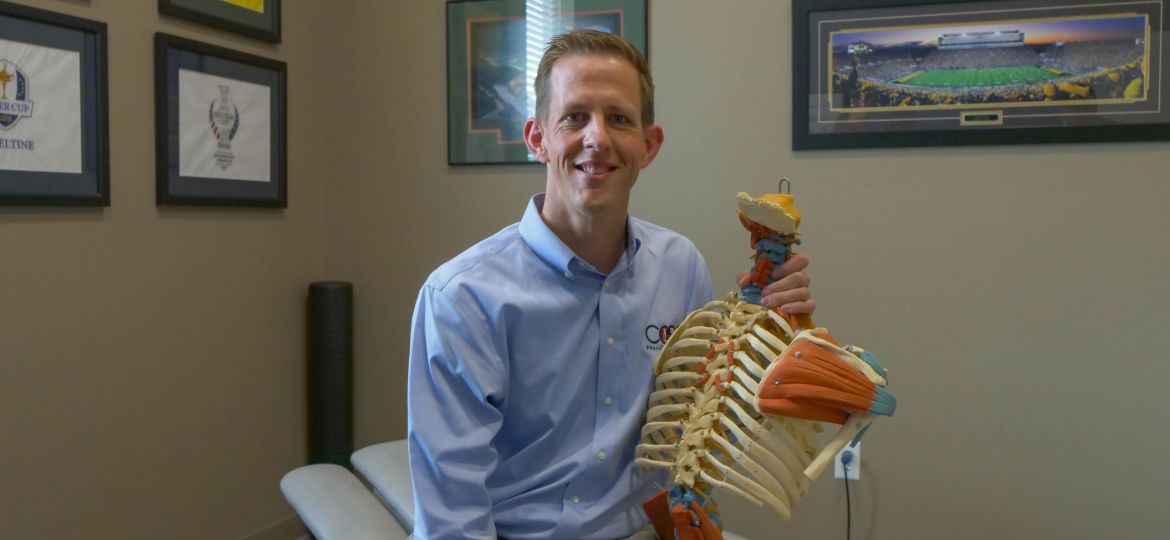
Welcome to another deep dive into one of the main pillars of treatment all the therapists here at Core Physical Therapy practice: myofascial release. This powerful approach to treatment has had incredible results for our patients.
One man avoided a rotator cuff surgery through our myofascial release techniques. Another woman reported a significant decrease in her chronic shoulder pain for the first time in a long time. Another patient was able to eliminate her headache medication.
Myofascial release works.
But how? And why? That’s what we’re covering today!
We’ll share about:
- The interconnectedness of the human body
- Basics of myofascial release
- Why your pain and the “core of the problem” are often two different, and sometimes unrelated, areas
- Patient experiences after receiving myofascial release therapy
What is myofascial release?
To start, let’s first define the term. The word “myofascial” is a combination of two words, myo– and –fascia. The prefix “myo” is Greek and means muscle, and the suffix “fascia” is Latin for band.
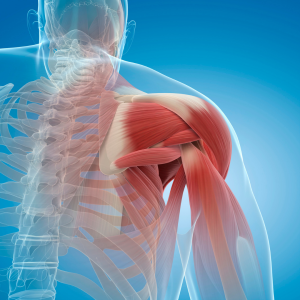 Muscles are…you guessed it…muscles! Physical therapists are revered as the “musculoskeletal experts” and tasked by the American Physical Therapy Association (APTA) with “transforming society by optimizing movement to improve the human experience.”
Muscles are…you guessed it…muscles! Physical therapists are revered as the “musculoskeletal experts” and tasked by the American Physical Therapy Association (APTA) with “transforming society by optimizing movement to improve the human experience.”
Fascia is defined by the 4th International Fascia Research Congress as the soft tissue component of the connective tissue system that is a part of the body-wide tensional force transmission system and a place for neurological/proprioceptive connection.
Okay…what? Let’s try that again. Dr. Jean-Claude Guimberteau defines fascia as “the tensional, continuous fibrillar network within the body, extending from the surface of the skin to the nucleus of the cell. This global network is mobile, adaptable, fractal, and irregular…constituting the basic structural architecture of the human body.” Ok, that’s a little better, how about one more time? Fascia is a type of connective tissue that surrounds everything in the body, is connected to everything, has no start and no end, and plays a major role in the structure and global function of the human body. It is the most pervasive tissue that connects each and every cell of the human body together.
If you really want to nerd out on fascia, take a look at this video to get a real-life perspective of fascia, and specifically understand how our blood vessels slide back and forth within the fascia at the microscopic level with the movement of muscles and tendons. It truly is a miracle as to how the body works together!
 Why do we have fascia?
Why do we have fascia?
What’s the purpose of our fascia? Let’s break it down into some of fascia’s most important functions throughout the body:
 Maintains structural integrity, supports the human body, helps with shock absorption, force transmission: The myofascial system was designed to keep the body in a balanced, symmetrical position. It creates and maintains body contour, resists/balances gravity, creates stability and enables frictionless motion. One perfect example can be seen through the spinal column. The myofascial release system supports it in space like a tent pole being supported by the guy lines staked into the ground.
Maintains structural integrity, supports the human body, helps with shock absorption, force transmission: The myofascial system was designed to keep the body in a balanced, symmetrical position. It creates and maintains body contour, resists/balances gravity, creates stability and enables frictionless motion. One perfect example can be seen through the spinal column. The myofascial release system supports it in space like a tent pole being supported by the guy lines staked into the ground.- Provides pathways for arteries, veins, and lymphatic vessels (not to mention wraps around all the vessels as well so it contributes to both the structure and function of these tubes)
- Place of communication from the brain to the body and body to the brain
- Place of exchange of nutrients to promote healing and normal function
Do we have different types of fascia?
Great question! There are different types of connective tissue throughout the body and different types of fascial tissues, all depending on what function is needed.
A few that we won’t dive into much are the joint capsules, tendons/ligaments, periosteum (bone), and dura mater/perineurium which is the fascia around the brain/spinal cord. Make sure, if you haven’t yet to check out our Craniosacral blog for a deeper dive into treatment of the connective tissue system of the brain and spinal cord.
Let’s dive into the 3 main areas of fascia that our therapists work with on a daily basis.
Superficial fascia: This is the outermost layer of fascia that surrounds the body from head to toe, front to back and right to left, and is right underneath the skin. This layer is LOADED with proprioceptors (sensors that give information to your brain), varies in thickness level, and contains a lot of collage fivers and fat cells. Collagen is the most abundant protein in the body and helps to provide structural strength to whatever tissue it contains.
Investing/middle fascia: This surrounds the muscles of the trunk as well as all bones, cartilage, muscles, tendons, and ligaments. It varies in the thickness and composition due to the demands because form always follows function.
Deep fascia/visceral fascia: This is the fascial layer that wraps around all of your organs, and its function is mostly to decrease friction by providing lubrication to allow for support and organ mobility as we move. Later, we will dive into a little gem called visceral manipulation and why it plays a part in Core PT’s treatments as well.
In short, fascia is a 3-dimensional “fabric” or “webbing”, that has no start or end, and contributes to the structure and function of EVERY ASPECT OF YOUR BEING! But how do you treat this stuff?
Myofascial Release Treatment
Myofascial release is a treatment technique developed in the osteopathic philosophy of medicine, dating back to Dr. A.T. Still in the late 1800’s. The philosophy of osteopathy holds the belief that the body has the capacity to heal itself but sometimes it needs help with impairments and restrictions before it can continue the self-healing journey. When restrictions in the body develop, they have a global effect, similar to a finely knitted sweater getting a “snag” that pulls on the whole sweater. This creates abnormal tension/pressure on pain-sensitive areas that can cause spasm, increased tightness, and pain. Myofascial release is a very gentle, hands on approach to help balance the tension patterns of the body towards symmetry. As symmetry is restored, there is a reduction in the abnormal pressure on those areas to help decrease tone, spams, and ultimately pain.
Take a look at this picture below to see a picture of how tightness in one area creates a global pattern of tightness reflected throughout the body.
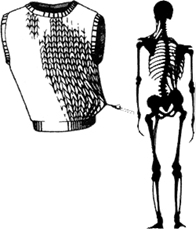
How do I know if my fascia has snags and how do they develop?
There can be a multitude of reasons of why fascial snags/restrictions develop in a person’s body but there are three main types that we will review below:
1) Physical trauma: injuries, car accidents, surgeries, injections, etc. Anytime your body impacts or is impacted by another physical object the force of that impact is felt throughout the body. Sometimes the body is able to fully accept and dissipate the force so there is no residue afterwards. Other times, the force gets “stuck” or “held” in the body which causes increased tightness and over-time can lead to pain. Surgeries can also create a tightness pattern that, over time, can lead to pain in other areas.
A perfect example of this: A man comes to PT presenting with headaches and neck pain after a car accident. He had been to another physical therapy clinic and made excellent progress but plateaued. He heard about Core PT and our unique approach to treatment so he came to see if further improvement could be made. After the evaluation and assessment, the therapist noticed a tightness pattern throughout his body from a past hip surgery that happened 40-50 years ago. After releasing tension through this specific fascial line his headache went from a 4/10 constant to 0/10 and his chronic shoulder and low back pain also improved, which he wasn’t even pursuing treatment for. After a few more sessions the patient is noting full resolutions of his migraines that limited his ability to drive for his job and is now down to mild headaches and even days without headaches. Was there trauma from his car accident that needed treatment?…yes! But his body was also holding a tightness pattern from something that happened decades ago, limiting his ability to make progress without treatment for that area.
2) Chronic microtrauma: postural imbalances, lack of movement, anatomical short legs, fallen arches, etc.
Here’s a great example. When you stand in line at the store, at home to do dishes, in the line at Starbucks, do you stand with weight equally on both legs? Likely not. When you sit in the car, at the movies, at dinner, or at the office, do you sit with weight equal on each butt bone, straight up with your knees at 90 degrees? Likely not. Chances are there is a pattern of how you like to sit/stand/lie down, etc. If we persist in this pattern without changing, that persistent pattern can set you up for issues down the road without you even knowing it.
3) Psychological trauma: There is a deep and inseparable relationship between the mind and the body. The way we think affects how we feel and can create a physical manifestation of pain or tightness. Most of us at some point in time have had life experiences that cause an increase amount of stress in our lives. We were designed to deal with these experiences, find healing for them, and continue on our way. However, if we “carry” the effects of this day to day without properly dealing with the emotional aspects this stress can lead to muscular tension from increased and persistent nervous system activation, which perpetuates tightness in the myofascial system and ultimately leads to discomfort and pain.
Food for thought: Emotional wound/trauma that has happened to each one of us…picture that as “baggage”. Picture yourself carrying around a suitcase full of your own personal life experiences, some are undoubtedly larger than others. Now, imagine yourself carrying around that suitcase all day everyday…eventually you’ll develop hand, elbow, shoulder, and neck tightness and ultimately, pain. In this example, let’s focus on the shoulder pain. Real pain exists in the shoulder, right? You are right. This pain can limit your ability to comb your hair, get dressed, grab the seat belt, put groceries away, lift your child, etc. But why does the shoulder hurt…. really? In this example it’s because of the suitcase! Once you put the suitcase down, the tension in the arm goes away which means the body has a chance to bring healing to overworked tissues.
Disclaimer
We are not counselors or mental health professionals, and we don’t pretend to be. However, we are a compassionate group of healthcare providers that deeply care about each one of our patients. We take very seriously our mantra of “getting to the core of the problem.” When that journey leads to discussion of the mind-body relationship, our patients often find the ah-ha moments which can help to kick-start the healing process. We can’t count the number of patients who are grateful for these “ah-ha” moments.
One patient her in forties came to Core with chronic back pain issues that she had been seeing a chiropractor for. However, after a flare up of low back pain that came from lifting an object off the floor, she decided to seek us out.
When she came in, she had significant tension and tightness in the connective tissues of her anterior pelvis. We treated her using myofascial release to focus on those tissues, but we also discussed stressors in her life. Through those conversations, we realized that when she was the most stressed, her physical symptoms were at their worst.
After sharing stretching exercises for home and breathing techniques to alleviate stress, the patient was able to see much of her symptoms resolve after only three visits.
We mean what we say in our “Why” statement: We want to partner with you on your journey so that together we can help you achieve your best life. We are ready and willing to take whatever steps necessary for our patients.
Myofascial Release Treatment Cont.
Let’s refer back to our sweater snag in this skeleton. In this instance there is a snag at the area of the left pelvis/hip.

From our decades of experience, we might suggest the following as potential reasons why this snag could be here:
1) Someone who likes to consistently sit cross legged in a chair, or frankly just sits a lot
2) Someone who likes to put more weight chronically on their left foot more than the right
3) Residual tightness from a past left ankle/knee sprain
4) Past episode of low back pain or sciatica pain that never fully got treated out
5) Flare ups of the colon like IBS or Crohn’s disease, etc.
6) Tightness from a pregnancy, c-section, or other abdominal surgery
7) A runner who runs the same routes and only turns to the left.
Even though the snag is on the left, it is creating a tightness pattern throughout the entire skeleton. Imagine the skeleton trying to reach overhead with the left arm but the snag doesn’t allow the sweater to stretch up on the left side. Chances are the left shoulder muscles will have to work harder to perform that task which can lead to inflammation in that shoulder. The patient might go to their doctor to find relief of the left shoulder pain, but can you see how the problem is nowhere near the shoulder?
Another example: Let’s say a person wants to increase their their activity to help with blood pressure management, weight loss, or any number of awesome benefits of physical activity. Weakness of the left hip muscles in the glutes can come from tightness in the left hip muscles of the front, called inhibition, which can lead to decreased left leg stability and left knee pain.
Short Tangent:
Tightness in the body acts like a “governor” that inhibits/limits the ability of a muscle to work, making it underperform. We could spend time strengthening the glutes but if they are inhibited by the nervous system because of tightness, there will be a limit to how strong they can activate. However, when the tightness goes away, the inhibition goes away and the strength returns and stays, instead of having persistent weakness. Make sense? Ok, back to the regularly scheduled programming.
If someone started having left knee pain, they might seek out care which might be anti-inflammatory pills, muscle relaxer pills, injections, or something else. But the true cause of the problem is tightness in the left hip and pelvis from the myofascial snag that allowed weakness to persist.
Now hold on…wait a minute! How does my colon affect my pelvis/spine? Let’s dip our toe just a little into what’s called visceral manipulation.
Visceral Manipulation
Visceral manipulation is a manual therapy technique that consists of gentle, very specifically placed manual forces that encourage normal mobility, tone, and inherent tissue motion of the viscera (organs), their connective tissue and other areas of the body where physiologic motion has been impaired (Visceral Manipulation: Abdomen 1(VM1)).
As we learned earlier, there is a type of fascia that surrounds the organs and suspends them off the skeleton in space, allowing them to function and move without restriction. Should that fascia become restricted due to a multitude of reasons, musculoskeletal mobility is limited which increases pressure/force on muscles/joints and causes pain. This is illustrated through a recent testimony of a patient:
A patient came to Core with left shoulder pain that was previously addressed in physical therapy earlier in the year but her pain came back in the last few months. She was evaluated and diagnosed with impaired shoulder range of motion and symptoms associated with shoulder impingement. The therapist discovered there was an increased amount of tension around the fascia of her stomach and diaphragm on the left that was limiting overall thoracic mobility. After releasing this fascial tension the patient performed the same impingement tests and they went from being positive (meaning painful), to negative (not painful) in just a few visits!
Do I have snags in my body?
The likely answer is yes, you do, even if you aren’t experiencing pain. But don’t worry! We can locate tightness typically on anyone, even without pain, because we live in a world of asymmetry. Because of this asymmetry, these tension patterns develop which is why regular stretching, strengthening, and aerobic exercise utilizing the whole body are important to help minimize these asymmetrical patterns. Generally speaking, if you take care of yourself with your daily physical and emotional needs your body has plenty of ability to manage/work around the tightness that is there and keeps you from experiencing pain. However, if you get into a bad habit of not taking care of your daily needs there is a depletion of the body’s ability to manage the tightness. Then suddenly you bend forward to close the oven door and find you can’t stand up because of significant pain in your low back. That’s when you know it’s time to call Core (though we hope it doesn’t get to that point!).
Is myofascial release only at Core Physical Therapy?
The short answer is no. As mentioned earlier, myofascial release as a treatment philosophy has been around for 100+ years and is utilized throughout the nation and world-wide. This is a foundational pillar to Core Physical Therapy and is no hidden secret, yet we are one of the only physical therapy companies in the Des Moines metro area to utilize this approach. Over the last 20 years, we have consistently seen improvements in the quality of life in thousands of the patients who walk through our doors, and we intend to continue for many decades to come.
So, let’s review:
- Fascia is THE most prevalent tissue in the human body, providing structure and assisting with the daily function of the entire human body.
- Myofascial release helps to decrease tension imbalances to restore symmetry. As your body goes from an asymmetrical to more symmetrical pattern the pressure on pain-sensitive areas is released and your symptoms decrease.
- Through highly skilled, manual therapy services our physical therapists have partnered with thousands of patients over the last two decades to help them achieve their best life.
- What are you waiting for? Come and see for yourself!
Hear From Our Patients:
“A good friend of mine recommended Core Physical Therapy to me when my sciatic pain flared up. I’m so thankful I went! Mary Beth was such a great help to me. She took time to evaluate me, listened to my concerns and suggested exercises specific to me and my needs. The myofascial work she did was amazing and beneficial with the strengthening exercises she recommended for my specific needs. I highly recommend Core PT for anyone with pain!” – Kristi
“Core PT is like no other experience I’ve had with physical therapy. Their hands-on approach was key to my recovery and long-term health! They healed me and gave me the tools to maintain my wellbeing. Would highly recommend Ellen M. to anyone experiencing chronic or injury related pain!” – Mike
“Core PT is like no other physical therapy I had experienced in the past. I was used to a “gym-like setting” with weightlifting equipment which practically had me in tears every time. Myofascial is a different approach & has been working wonders for me. I highly recommend Justin Scherff in the Adel office & Kirsten Radke in WDM. Both are extremely passionate about what they do and educate their patients along the way. Thank you both for making such a huge difference in the health & wellbeing of others!” – Jen
“Noel Turk at Core has helped me with my chronic Fibromyalgia symptoms. She’s gentle, thorough, and extremely knowledgeable. Therapy with Noel has allowed me to take her work into my Pilates instruction and maximize its benefits. My range of motion, and pain level has decreased with sessions at Core. Thank you, Noel!! Please make an appointment ASAP with this wonderful doctor!” – Denise
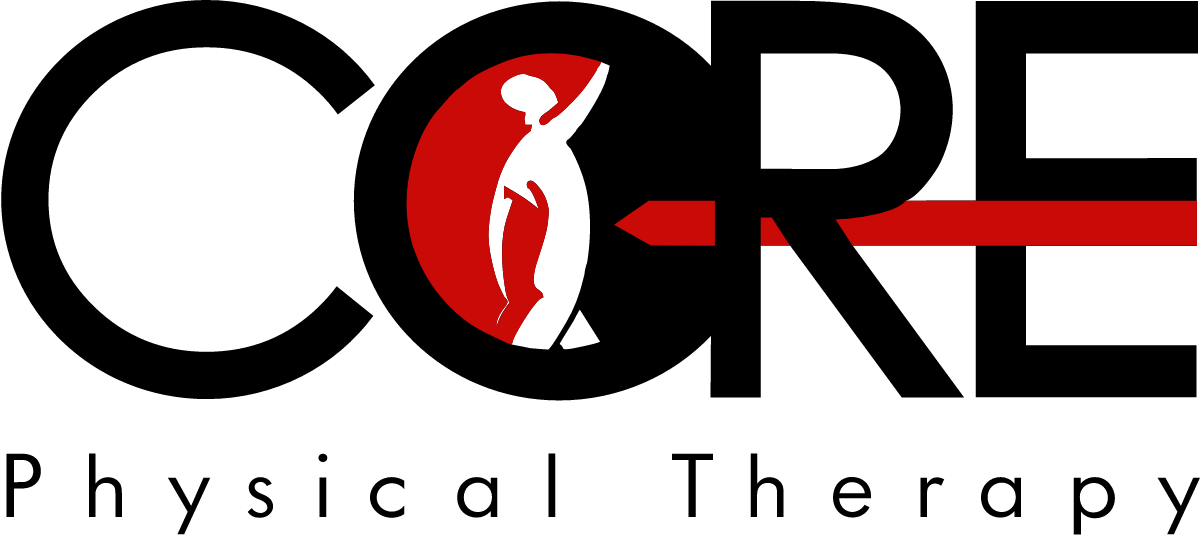
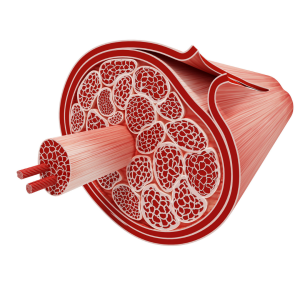 Why do we have fascia?
Why do we have fascia? Maintains structural integrity, supports the human body, helps with shock absorption, force transmission: The myofascial system was designed to keep the body in a balanced, symmetrical position. It creates and maintains body contour, resists/balances gravity, creates stability and enables frictionless motion. One perfect example can be seen through the spinal column. The myofascial release system supports it in space like a tent pole being supported by the guy lines staked into the ground.
Maintains structural integrity, supports the human body, helps with shock absorption, force transmission: The myofascial system was designed to keep the body in a balanced, symmetrical position. It creates and maintains body contour, resists/balances gravity, creates stability and enables frictionless motion. One perfect example can be seen through the spinal column. The myofascial release system supports it in space like a tent pole being supported by the guy lines staked into the ground.